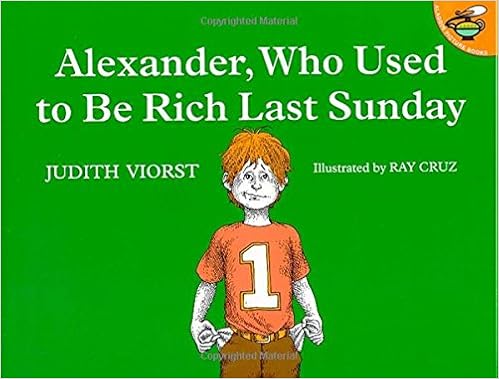FOR THE WEEKEND, share this fun title with your child!
Alexander, Who Used to be Rich Last Sunday is appropriate for children age 5-9.
Alexander, Who Used to be Rich Last Sunday is appropriate for children age 5-9.

Alexander's grandparents came to visit and Alexander knows that when they come, they bring a dollar for him and his brothers. He loves when his grandparents visit because he loves money. But in Alexander, Who Used to be Rich Last Sunday he quickly learns how fast that dollar can disappear. Follow along with the story written by Judith Viorst and illustrated by Ray Cruz to discover where all of Alexander's money disappears.
Practice this Comprehension Strategy-Making Connections:
As you read Alexander, Who Used to be Rich Last Sunday you will be able to help your child find connections to their own life. This book can be a window into their own spending habits or a mirror to reflect a possibly less desirable outcome for their money. You can ask have a conversation about whether your child has ever wanted to spend their money right away, if they find it hard to save their money, or if there has ever been something that they really wanted that they would save their money to buy.
Do this with your child:
Alexander, Who Used to be Rich Last Sunday provides an excellent opportunity to practice your child's financial literacy skills. Alexander has one dollar bill but as he spends his money, his total is less and less. For older children, keep track of the amounts that he's spending to see how much he has left. You can use real money to help keep track of the amount. For younger children, talk about the different types of money, bills and coins, and help your child recognize them by size and color. For the youngest children, coin sorting and stacking can be a fun activity to go along with the story.
If you're interested in sharing Alexander, Who Used to be Rich Last Sunday with your child you can find it from Aladdin Paperbacks, a division of Simon & Schuster here. Please like them on Facebook and follow them on Twitter and Instagram.



